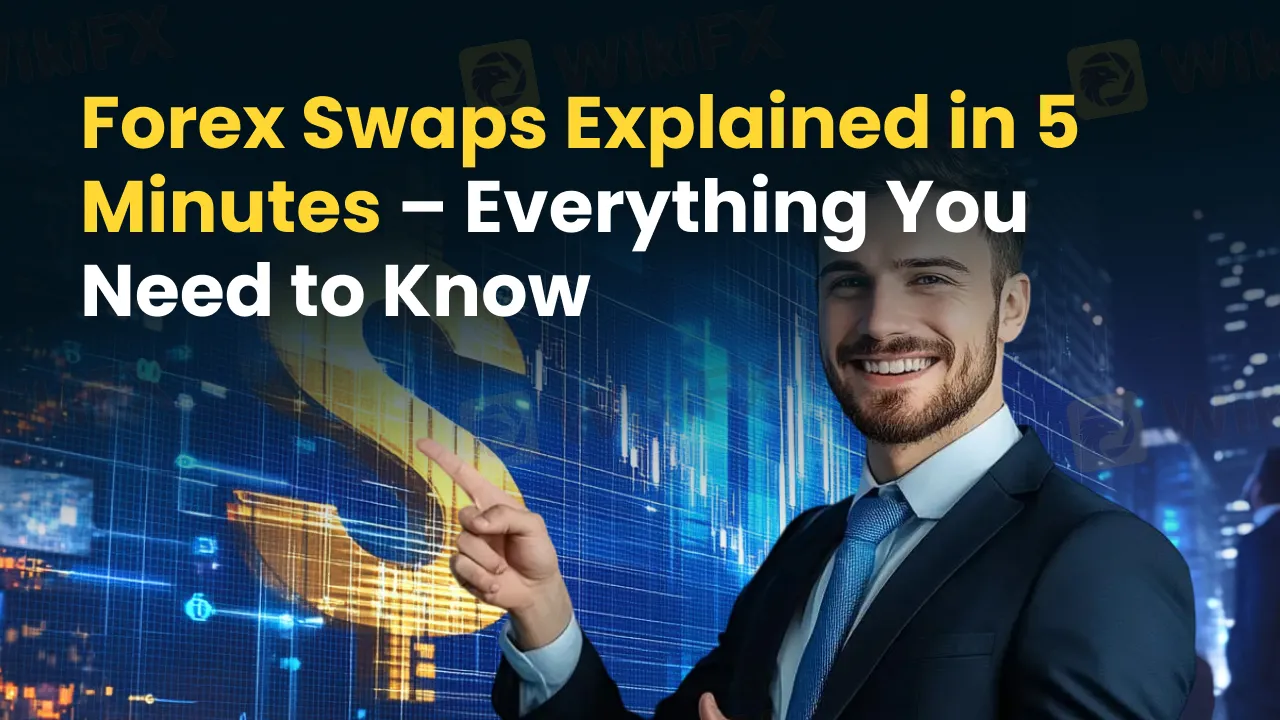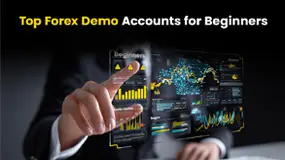简体中文
繁體中文
English
Pусский
日本語
ภาษาไทย
Tiếng Việt
Bahasa Indonesia
Español
हिन्दी
Filippiiniläinen
Français
Deutsch
Português
Türkçe
한국어
العربية
Forex Swaps Explained in 5 Minutes – Everything You Need to Know
Abstract:Stumbled over the term forex swap and could not find its meaning, relevance and implication? In this quick guide, we’ll explain forex swaps in the simplest terms possible.

Stumbled over the term forex swap and could not find its meaning, relevance and implication? In this quick guide, well explain forex swaps in the simplest terms possible. So, what is a swap in forex trading? It is simply an agreement made between two foreign parties to swap interest payments on a loan made in one currency for interest payments on a loan in another. It can even involve the exchange of principal amounts. As the agreement concludes, the principal amount would be exchanged back. A swap in forex typically involves a notional principal used for calculating interest. However, it does not get exchanged. To know more about this topic, keep reading!
A Little Background on Swaps in Forex
The most significant purpose behind executing a currency swap agreement is to obtain loans in foreign currency at attractive interest rates than what might be the case when borrowing directly in a foreign market. During the 2008 financial crisis, the US Federal Reserve allowed several liquidity-strapped countries to swap currencies to meet urgent borrowing needs.
Salomon Brothers, an investment banking firm, arranged the currency swap transaction wherein the World Bank and IBM agreed to the very first transaction of this sort in 1981. As part of the transaction, IBM swapped German Deutsche marks and Swiss francs for US dollars to the World Bank.
The execution of forex swaps is done through loans with maturities up to 10 years. These swaps differ from interest rate swaps by involving principal exchanges.
Explaining the Foreign Currency Swap Process
The foreign currency swap, as explained above, is an agreement by which one party pays interest charged on the principal loan amount of another party throughout the agreement tenure. As the swap gets over, the principal amounts get exchanged one more time at the agreed rate. Currency swap rates used to be tied to the London Interbank Offered Rate (LIBOR), an average interest rate used by international banks when borrowing from each other. It is used as a benchmark for other overseas borrowers. Swaps are also benchmarked based on the Secured Overnight Financing Rate (SOFR) from 2023.
Types of Swaps in Forex
Swaps in forex are of many types, which have been explained below.
Fixed for Fixed Currency Swap
In this arrangement, the parties give consent to exchange fixed interest rate payments in two currencies. Commonly used by the two parties seeking predictable interest payments, the arrangement prevents them from facing potential uncertainty arising from interest payment fluctuations due to floating rates.
Fixed for Floating Currency Swap
This arrangement involves different types of interest rate payments from two parties. Here, one party makes fixed interest payments, and another one pays based on the floating rate, such as SOFR. This swap is reflective of a certain payment structure that one party wants, while the other party intends to capitalize on potential interest rate changes.
Floating for Floating Currency Swap
The swap involves the exchange of interest rate payments from both parties based on the prevailing floating rates in their respective currencies. Also called a basis swap, this helps both parties to maximize the potential interest rate movement across different markets.
Amortizing Currency Swap
This swap is designed to reduce the notional amount over time, helping users align with a principal repayment schedule. Whenever the parties seek swap alignment with an amortizing loan, such as project finance, they can enter into this swap agreement. With this, both parties exchange interest payments on reducing principal amounts.
Accreting Currency Swap
This type of swap involves the notional principal rising over time.
Zero-Coupon Currency Swap
A zero-coupon currency swap will have one party paying interest regularly while the other party pays all the interest on maturity.
Reasons Why Investors Use Currency Swaps in Forex
Falling Borrowing Costs
Securing cheaper debt is the common reason why investors opt for currency swaps. For instance, European Company B procures a loan worth $120 million from US Company C. At the same time, US Company C takes a loan worth 100 million euros from European Company B. The $1.2 spot rate, indexed to LIBOR, decides the exchange between these two companies. The companies entered into the contract because it helps them obtain currencies at an attractive rate. If there is an exchange of principal in a currency swap deal, the principal will be exchanged again on maturity.
Falling Exchange Rate Risks
Currency swaps are also used by companies to lower exposure to anticipated exchange rate fluctuations. Usually, these risks arise when companies conduct business globally. So, they would like to hedge such risks by acquiring opposite and simultaneous currency positions. As they no longer require hedging, companies can unfold the swap. The potential losses owing to fluctuating exchange rates can be offset by the profit earned through the swap. As a result, companies continue to operate without any interruption.
Conclusion
Forex swaps are essential financial instruments that offer flexibility, cost-efficiency, and risk management to investors and multinational companies. Whether it's for securing better interest rates, managing currency exposure or structuring long-term funding, currency swaps are a strategic solution to navigate the forex market. Understanding the types, processes and real-world applications of forex swaps, traders can make more informed investment decisions.
Find the Latest Forex Updates on WikiFX Masterminds
Join it by following these simple steps -
1. Scan the QR code placed right at the bottom.
2. Download the WikiFX Pro app.
3. Afterward, tap the ‘Scan’ icon placed at the top right corner
4. Scan the code again.
5. Congratulations, you are part of the community.

Disclaimer:
The views in this article only represent the author's personal views, and do not constitute investment advice on this platform. This platform does not guarantee the accuracy, completeness and timeliness of the information in the article, and will not be liable for any loss caused by the use of or reliance on the information in the article.
Read more

Top 5 Warning Signs- Why You Should Avoid MTrading Broker?
Before choosing a forex broker, it's crucial to spot red flags that could cost you. MTrading has raised concerns among traders, including delayed withdrawals, poor customer support, and questionable transparency. Users also report issues like slippage and platform glitches, which can harm your trading performance. In this article, we highlight the top 5 warning signs that explain why you should avoid MTrading broker and choose a more reliable alternative.

MarketsVox Exposed: The Tactics Draining Traders’ Hard-Earned Capital
Seeing MarketsVox as a forex broker, which can help you earn monumental profit on your investments? You have set your sights on the wrong option, unfortunately. The forex broker has been disallowing withdrawals, charging a much higher spread, and duping many traders under the pretext of high returns. Read on!

Top Forex Demo Accounts for Beginners
In this guide, we will explore the top forex demo accounts for beginners. We aim to help you find the best platform for your trading practice. Let's dive into the world of forex demo accounts and discover the best options available.

Investing in OnFin? Absurd Withdrawal Conditions & Trade Manipulation May Spoil Your Trading Mood
Planning to invest in OnFin, the forex broker, which has been a nightmare for many forex traders? While withdrawal denials have remained perennial for them, trading manipulations, including the illegitimate disappearance of deposits, have put OnFin under the scanner. Traders have been vehemently expressing their frustration about the forex broker on various broker review platforms. In this article, we will share some complaints that made us expose this broker here.
WikiFX Broker
Latest News
Charles Schwab Forex Review 2025: What Traders Should Know
How 3 Simple Steps Cost a Businessman INR 4 Crore in a Forex Scam
PrimeXBT Expands FSCA Licence and Enhances Crypto Services in 2025
Quotex Broker Review 2025: Is It a High-Risk Broker?
Is CBCX a Safe and Trustworthy Broker for Traders?
TopFX Launches Synthetic Indices Trading on cTrader Platform
Is TradeEU Reliable in 2025?
How Commodity Prices Affect Forex Correlation Charts
What WikiFX Found When It Looked Into XS
The Global Inflation Outlook
Currency Calculator


